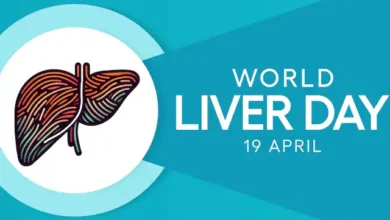Depots for anti-oxidants
Both endogenous (produced by mitochondria, peroxisomes, and phagocytic cells) and exogenous (produced by pollution, UV radiation, xenobiotic chemicals, and cigarette smoke) processes may produce reactive oxygen and nitrogen species, or free radicals. Antioxidant molecules that are produced in our bodies, such as glutathione, ubiquinone, or uric acid, as well as those that are absorbed from food, such as flavonoids, vitamins C, E, and A, neutralize the harmful effects of free radicals.

While they don’t have any antioxidant properties of their own, some microelements like zinc and selenium are necessary for the activation of several antioxidant enzymes.Retaining the equilibrium between antioxidants and free radicals is essential for good health. Controlling oxidative stress processes could therefore prove to be essential for the prevention and treatment of numerous diseases, including but not limited to diabetes, atherosclerosis, cancer, coronary artery disease, inflammation, liver diseases, cardiovascular diseases, cataracts, nephrotoxicity, and age-related neurodegenerative processes.
Antioxidant vitamins such as pro-vitamin A carotenoids, vitamin C, and vitamin E may be found in fruits and vegetables. Because they are necessary for the functioning of antioxidant enzymes, zinc, copper, manganese, and selenium are regarded as antioxidant minerals.
Antioxidant qualities and dietary sources
Vitamin C is an iron-absorbing vitamin that is water soluble and antioxidant. Since vitamin C cannot be synthesized by humans, fruits and vegetables must be included in their diet. Good sources of vitamin C are green leafy vegetables, potatoes, tomatoes, berries, and citrus fruits.
Vitamin E may be obtained as a dietary supplement, added to some foods, and found naturally in others. The term “vitamin E” refers to a class of fat-soluble substances having unique antioxidant properties. It is an antioxidant that is soluble in fat and prevents the oxidation of fat, which produces ROS. A wide range of foods contain vitamin E. The finest sources of alpha-tocopherol are nuts, seeds, and vegetable oils. Green leafy vegetables and fortified cereals also contain significant levels of this nutrient.
Vitamin A: Carotenoids, pro-carotenoids, and vitamin A itself may all work as powerful antioxidants to prevent heart disease from starting. Consumption of green and yellow vegetables, dairy products, fruits, and organ meats are among the best dietary sources of vitamin A. Vitamin A is found in the body as retinoic acid, retinol, and retinal.
Selenium: Ageing is defined by an imbalance between the body’s antioxidative defenses and the damage caused by reactive oxygen species (ROS). Selenium (Se), a trace element that is important for nutrition, has the ability to modify physiological changes brought on by oxidative stress in a progressive and spontaneous manner. This might prevent illness and promote healthy aging. Enhancing immune system performance, metabolic balance, and antioxidant defense are among the benefits of selenium. Insufficient selenium levels may shorten human lifespans by hastening the aging process or making people more susceptible to a range of illnesses, such as cancer and immune system problems. Brazil nuts and mushrooms are examples of sources.
Copper: It is a component of the antioxidant enzyme superoxide dismutase, which breaks down dangerous oxygen free radicals, and it promotes healthy immune system and brain development.
Manganese: A necessary element that controls how humans metabolize lipids and glucose as well as the creation and activation of several enzymes. Furthermore, it is a necessary component of Mn superoxide dismutase (MnSOD), which is primarily in charge of scavenging reactive oxygen species (ROS) during mitochondrial oxidative stress. Chickpeas, brown rice, mussels, and hazelnuts are the sources.
Zinc: Despite being a redox-inert metal, zinc has the ability to bind metals and has antioxidant properties. Moreover, zinc inhibits anti-inflammatory reactions that may otherwise exacerbate oxidative stress. Research has shown that both excess and insufficient zinc lead to oxidative stress in cells. Nuts are the sources.







